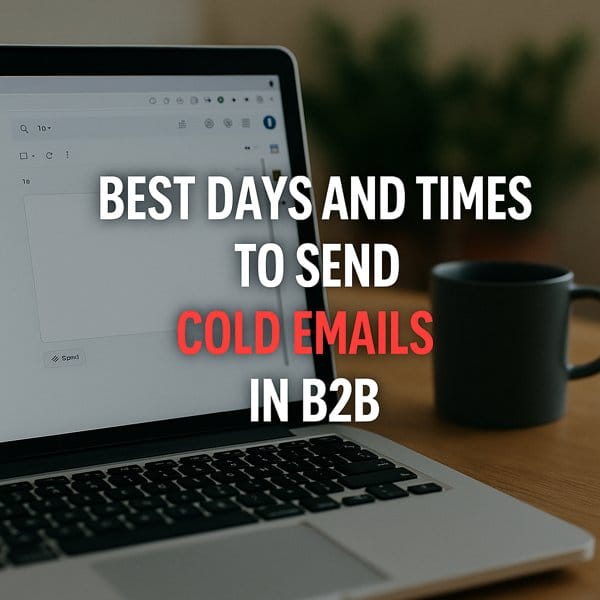The Best Blogging Strategies for B2B Businesses
Blogging is an important tool for businesses. It helps them connect with other businesses. This is known as B2B, or business-to-business. A strong blog can attract new clients and keep old ones engaged. There are many strategies to make a blog successful. In this article, we will explore the best blogging strategies for B2B businesses.

The Importance of a Clear Target Audience in B2B Blogging
![]()
Knowing your audience is key. This means understanding who you are writing for. In B2B blogging, the audience is often other companies. They have different needs than regular consumers.
Here are some points to consider:
- Identify the industry you want to target.
- Understand their pain points and challenges.
- Learn what solutions they seek from your products or services.
- Consider their level of knowledge about your field.
- Create content that speaks directly to their needs.
- Use language and terms familiar to them.
For example, if you sell software to healthcare providers, write about topics relevant to them. Discuss issues like data security or patient care efficiency. This builds trust and shows you understand their world.
Statistics show that 70% of B2B buyers read blogs before making decisions. This highlights the importance of knowing your audience well.
Creating High-Quality Content That Adds Value
![]()
High-quality content is essential. Your blog should provide real value to readers. This helps establish your company as an authority in your field.
Consider these aspects when creating content:
- Write informative articles that solve problems.
- Include case studies and examples to illustrate your points.
- Use visuals like infographics to explain complex ideas.
- Update your content regularly to keep it relevant.
- Encourage guest posts from industry experts.
- Make sure your content is easy to read and understand.
For instance, HubSpot shares valuable marketing insights on their blog. They use data and examples, making their content trustworthy and engaging.
Research shows that companies that blog receive 97% more links to their websites. This can lead to higher search engine rankings and more visibility.
Optimizing Blog Posts for Search Engines (SEO)
![]()
Search Engine Optimization, or SEO, is crucial for your blog. It helps your content appear in search results. Good SEO practices can drive more traffic to your site.
Follow these tips for better SEO:
- Research keywords relevant to your business.
- Use those keywords naturally in your content.
- Write catchy titles and meta descriptions.
- Include internal and external links in your posts.
- Optimize images with alt tags and proper file names.
- Ensure your website is mobile-friendly.
For example, if you run a consulting firm, use keywords like “business strategy” or “consulting services.” This helps potential clients find you easily.
According to a study, 61% of marketers say improving SEO and growing their organic presence is their top priority. This is why SEO is vital for B2B blogs.
Promoting Your Blog Through Social Media Channels
![]()
Social media is a powerful tool for promoting your blog. It allows you to reach a broader audience quickly. Sharing your content can generate more interest in your business.
Consider these social media strategies:
- Share your blog posts on platforms like LinkedIn and Twitter.
- Engage with followers by responding to comments.
- Join relevant groups and participate in discussions.
- Use hashtags to increase visibility.
- Post at times when your audience is most active.
- Encourage employees to share content on their profiles.
For instance, Buffer uses social media effectively. They share blog updates and engage with their followers, driving traffic back to their site.
Statistics show that 73% of marketers believe their efforts through social media marketing have been “somewhat effective” or “very effective.” This proves the importance of social media in B2B blogging.
Building an Email List for Direct Communication
![]()
Email marketing remains a strong tool for B2B businesses. Building an email list allows direct communication with your audience. You can send them valuable content directly to their inbox.
Here’s how to build your email list:
- Offer incentives like free eBooks or guides for signing up.
- Use sign-up forms on your blog and website.
- Send regular newsletters with updates and useful content.
- Segment your audience for personalized messages.
- Monitor engagement rates and adjust your strategy accordingly.
- Always comply with privacy laws when collecting emails.
A great example is Neil Patel. He offers free resources in exchange for emails. This strategy has helped him grow a large email list.
Studies show that email marketing can yield an ROI of 4,400%. This shows how effective email communication can be for B2B businesses.
Engaging with Your Audience Through Comments and Feedback
![]()
Engagement is vital for a successful blog. Responding to comments and feedback creates a sense of community. This builds loyalty among your readers.
Here are ways to enhance engagement:
- Encourage readers to leave comments on your posts.
- Respond promptly to questions and feedback.
- Ask open-ended questions to spark discussions.
- Highlight reader comments in future posts.
- Use polls or surveys to gather opinions.
- Be transparent and authentic in your responses.
For example, Moz actively engages with its audience. They respond to comments and create follow-up content based on feedback.
A survey found that 68% of consumers feel more positive about a brand after engaging with it on social media. This emphasizes the importance of interaction in B2B blogging.
Measuring Success with Analytics Tools
![]()
Analytics tools help you measure your blog’s success. They provide insights into what works and what doesn’t. This information is crucial for improving your strategy.
Consider these key metrics:
- Track page views and unique visitors.
- Monitor bounce rates to see how long users stay.
- Analyze the sources of your traffic.
- Check conversion rates for calls to action.
- Review social media shares and engagement.
- Adjust your content strategy based on data insights.
Google Analytics is a popular tool for tracking blog performance. It provides detailed reports to help you understand your audience better.
Reports indicate that 53% of marketers prioritize analytics to improve their content strategy. This shows the importance of using data to guide your blogging efforts.
Conclusion: The Best Blogging Strategies for B2B Businesses
![]()
In conclusion, implementing effective blogging strategies is essential for B2B businesses. Understanding your target audience helps create valuable content. Optimizing for SEO ensures your blog reaches more people. Promoting through social media expands your reach. Building an email list allows for direct communication, while engaging with your audience fosters loyalty. Finally, measuring success with analytics helps refine your approach. By following these strategies, B2B businesses can enhance their online presence and achieve greater success.




